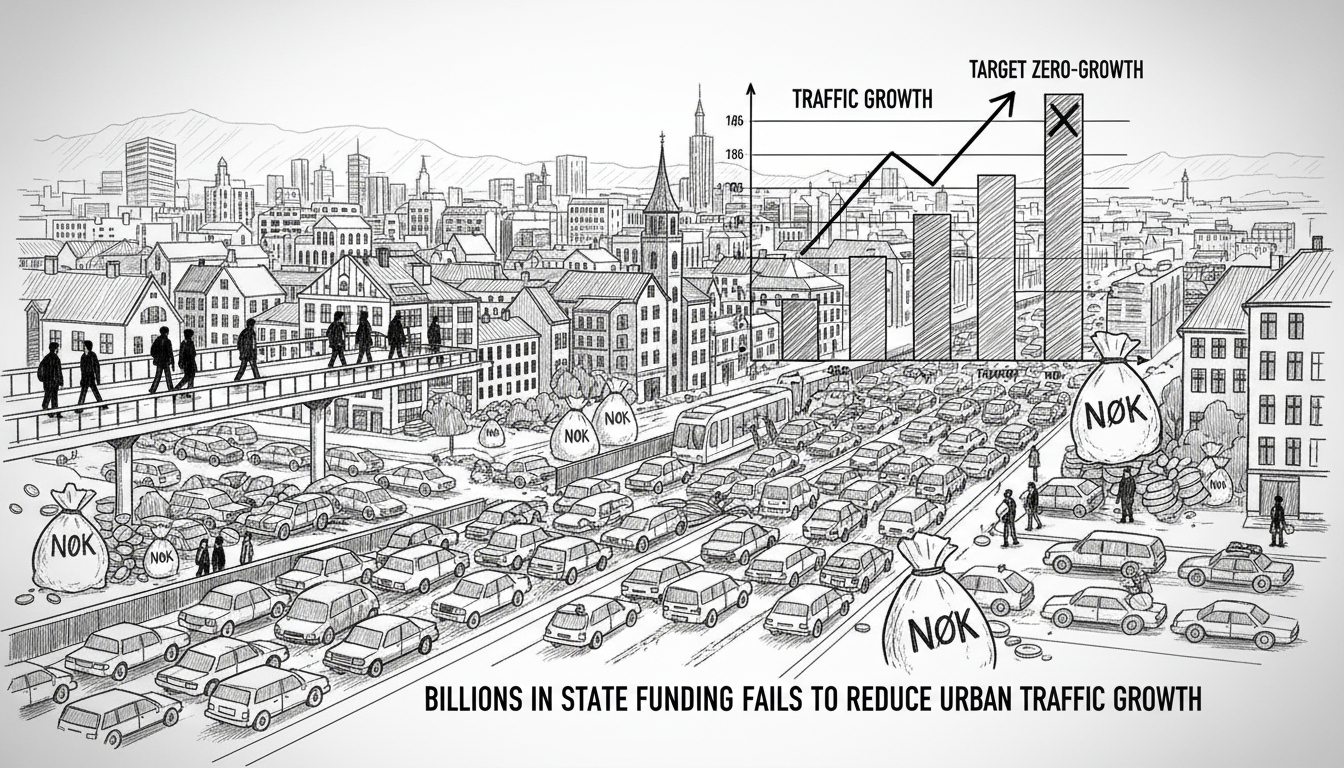Norwegian cities struggle to meet zero-growth traffic targets despite receiving billions in state funding. Public transport cuts and rising car usage create a perfect storm for urban congestion.
State Secretary Cecilie Knibe Kroglund acknowledges the challenge. She says local authorities must adjust their methods as personal car traffic increases. The zero-growth target in city development agreements becomes harder to reach after reductions in public transport services.
The revised national budget allocated 7.7 billion kroner to urban areas. The proposal for next year's budget includes 7.1 billion kroner. While this represents a decrease, officials claim it matches expected urban needs.
Transport Ministry representatives avoid specifying consequences for cities missing targets. They provide no clear answer about reduced transfers or other sanctions.
Fresh data from the Norwegian Public Roads Administration reveals alarming trends. Traffic will surge dramatically in and around major cities without more drastic measures. The agency prepared urban analyses for Norway's four largest metropolitan areas.
Projections show substantial traffic growth by 2036 and 2050. This means more congestion, longer delays, and cities falling far short of their zero-growth objectives.
To achieve targets, road authorities recommend local governments implement multiple measures. These include higher toll fees and more expensive parking, even in towns where parking currently remains free. The package also suggests expanding bus services and reducing public transport ticket prices.
The Norwegian Automobile Federation reports concerning shifts in commuting patterns. Their latest survey shows 47 percent now use cars for work commutes. This marks a sharp increase from two years earlier when 41 percent reported car usage.
NAF's press chief Ingunn Handagard warns that public transport cuts could push even more people toward cars. She notes that fewer people today have public transport options that can compete with private vehicles.
Public transport faces crises in multiple regions nationwide. Handagard criticizes the government's budget proposal for lacking increased funding to address public transport challenges. She observes the same pattern emerging in major cities, indicating a broader shift away from collective transport solutions.
Traffic volume data over three years shows Nord-Jæren and Trondheim areas experiencing the largest increases. Both regions already exceed zero-growth targets.
A road administration official emphasizes coordinated approaches. Tor-Erik Jule Lian says multiple measures working together prove crucial for achieving zero growth in personal car traffic. He identifies traffic regulation tools as essential, including increased tolls and expanded parking restrictions.
The situation in Rogaland county illustrates the financial pressures. Two years ago, Stavanger municipality spent 200 million kroner on free public transport for all residents. Now, Rogaland county council has approved cuts to public transport services.
County Mayor Ole Ueland cites technological and economic challenges behind the reductions. He specifically mentions national requirements to transition to zero-emission buses by next year as a major cost driver. Ueland states the county cannot meet these targets financially or technologically.
The cuts primarily affect departures after 8 PM and weekend services. The most frequently used routes will largely remain intact.
Ueland acknowledges environmental benefits from zero-emission transitions but criticizes the national approach. He says the state imposes expensive requirements without providing adequate funding. The county mayor must prioritize between service levels and environmental mandates, and he clearly favors maintaining passenger routes.
This tension between environmental goals and practical transport needs reflects broader Nordic challenges. Norway's ambitious climate targets often clash with regional realities and budget constraints. The situation demonstrates how top-down environmental mandates can strain local governments when not accompanied by sufficient financial support.
The coming years will test whether Norwegian cities can reverse this trend or if car dominance will continue growing despite official zero-growth targets.

